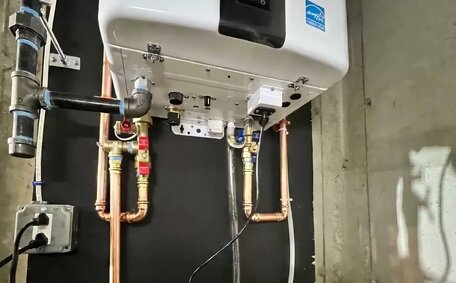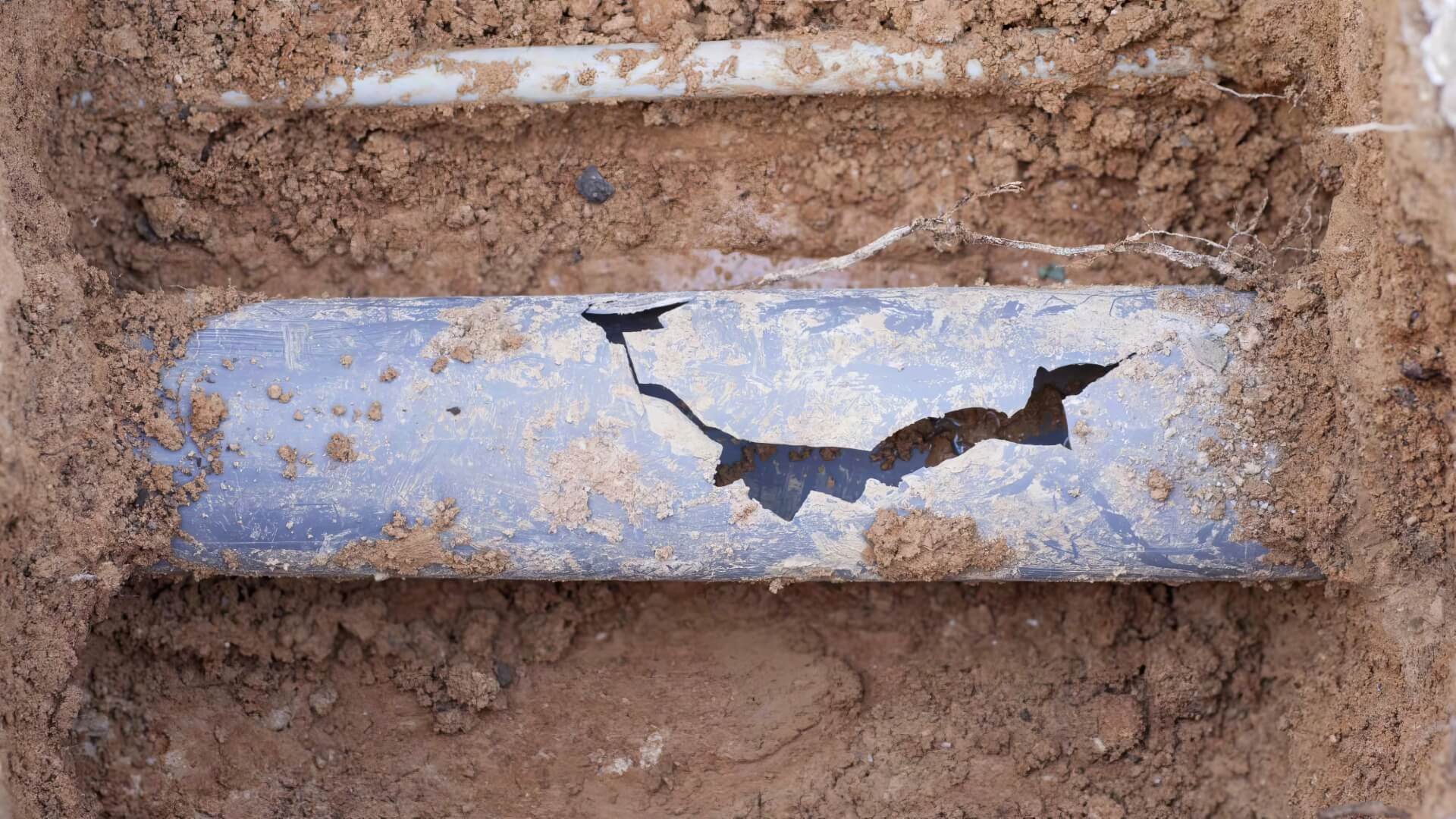Chemical Composition: The Origins and Makeup of Natural Gas vs Propane
In Australia, many homes utilise natural gas and propane as popular fuel sources for heating and cooking. While both serve as fuel sources, natural gas and propane have distinct chemical makeups and origins.
Natural gas is primarily methane, usually comprising 70-90% of its composition, with smaller amounts of other hydrocarbons like propane, butane, and ethane. It forms underground over millions of years from decaying organic matter and is extracted from gas wells and pipelines.
Similarly, propane, a nonrenewable resource, is produced during natural gas processing and crude oil refining. While natural gas and propane are chemically similar, propane is bottled into portable propane tanks rather than distributed through pipelines.
Both natural gas and propane are categorised as clean-burning fuels, emitting less carbon than wood or heating oil. Propane is often deemed more environmentally friendly, as it doesn’t involve the methane leakages from pipelines that natural gas does, impacting the atmosphere more substantially.
Homeowners can make more informed decisions about heating, cooking, and other domestic energy needs by understanding the distinctions in origin, composition, delivery, and environmental impact of natural gas and propane.
Energy Efficiency: Measuring BTUs from Natural Gas and Propane
When comparing fuel sources, an important consideration is energy efficiency - essentially, how much useful energy you get out of a given unit of fuel.
Energy efficiency is gauged using British Thermal Units (BTUs), with one BTU defined as the amount of heat required to raise the temperature of one pound of water by one degree Fahrenheit.
In terms of BTUs per cubic foot:
- Natural gas produces approximately 1,030 BTUs per cubic foot
- Propane produces approximately 2,516 BTUs per cubic foot
Propane has over twice the energy potential by volume compared to natural gas, highlighting its high efficiency. For practical purposes, over two cubic feet of natural gas are needed to match the energy output of one cubic foot of propane.
Propane may require larger storage tanks, but its greater energy efficiency can lead to lower costs over time due to the higher energy content per volume.
Homeowners can ascertain which fuel—natural gas or propane—best meets their energy needs by considering BTU differences, relative costs, and availability.
Cost Analysis: Evaluating Price Differences Between the Fuels
There are several key factors that impact the costs of natural gas versus propane for residential use:
- Regional pricing differences - Natural gas prices can vary across different states and territories depending on local market conditions and demand. Propane prices also differ by region.
- Market volatility affects both fuels, with prices for natural gas and propane fluctuating due to seasonal demand, inventory levels, production costs, and global market trends.
- Delivery and storage - The need for pressurised storage tanks makes propane delivery somewhat more complex than natural gas.
With so many variables at play, the cost-effectiveness of each fuel depends largely on your location and specific household usage requirements. What’s economical in one region may not be in another, given these variables.
As such, no definitive formula exists for determining whether natural gas or propane offers better value. Homeowners need to evaluate the unique price breakdowns and operating costs involved in their area to calculate which option provides more cost savings over the long term.
Being an informed gas customer means tracking local market trends and pricing shifts as part of maintaining a cost-efficient household.
Environmental Considerations: Comparing Emissions and Impacts
When weighing up natural gas versus propane, it’s vital to consider the wider environmental impacts of each fuel type.
In particular, the greenhouse gas emissions differ significantly:
- Compressed natural gas cng is primarily methane, which is itself a potent greenhouse gas, trapping over 25 times more heat than carbon dioxide.
- Methane escaping from ageing gas pipelines contributes to climate change, a risk propane doesn’t share due to its contained release.
- Notably, propane, when used as liquefied petroleum gas (LPG), does not release any methane emissions.
Propane appliances typically emit lower levels of nitrogen oxides and carbon monoxide compared to their natural gas counterparts.
This emissions difference gives propane an environmental edge from a greenhouse impact perspective. Homeowners concerned about their carbon footprint may wish to factor this into their natural gas versus propane decision.
Of course, reducing usage and improving energy efficiency remains paramount for any fuel source. But when comparing the two main options, propane’s lack of fugitive methane emissions makes it the more climate-friendly choice in many cases.
Compressed natural gas isn’t without merits, but its methane problem undermines many of them.
Applications: How Natural Gas and Propane Are Used in Homes
Natural gas and propane each have distinct applications for powering appliances and amenities within Australian households:
Heating Systems
In homes with access to piped infrastructure, natural gas is an efficient option for central heating systems, including hydronic radiators and forced air furnaces. Propane furnaces and room heaters are viable alternatives for regional homes without access to a gas grid, providing effective heating in colder seasons.
Cooktops & Ranges
Natural gas and propane are both suitable for cooktops and stove ranges. Natural gas ranges conveniently tap into existing household connections while propane is better for bottled gas stoves in remote kitchens. Propane also facilitates outdoor cooking via portable barbecue grills.
Water Heating
Natural gas is commonly used to heat water for household purposes via storage tank systems or instantaneous water heaters. Propane can also power continuous and on-demand water heaters where natural gas is unavailable.
Home Amenities
Beyond heating and cooking, natural gas and propane also fuel various home amenities like swimming pool heaters, patio heat lamps and backup generators when required. Propane’s portability makes it the prime choice for supplementary outdoor amenities.
Understanding where each fuel excels for domestic applications allows homeowners to select either natural gas or propane as best befits their household setup and requirements.
Delivery and Storage: Pipeline Distribution vs Portable Tanks
A key difference between natural gas and propane is how each fuel is delivered and stored:
Natural Gas Delivery & Storage
Natural gas is typically distributed via a network of pressurised pipelines under city streets, extending across suburbs. To receive piped gas supply, a home needs connection to this existing infrastructure.
Given that natural gas is lighter than air, pipeline leaks pose safety hazards and add to greenhouse gas emissions. Gas utilities undertake regular maintenance to ensure integrity of ageing pipeline assets.
Propane Delivery & Storage
Unlike natural gas, propane is delivered by truck as liquefied natural gas under pressure. This allows bulk transportation of propane in portable cylinders to homes not connected to mains gas.
For storage, propane can stored in specialised above-ground tanks ranging from small 45kg cylinders to large 7,500L tanks. Keeping tanks secured outdoors eliminates risk of gas buildup indoors.
The difference between propane gives households not served by pipelines flexibility in storage solutions. However, responsibly maintaining tanks is essential.
The choice between natural gas and propane depends on the home’s proximity to gas infrastructure and specific delivery needs.
Safety: Detecting Leaks and Taking Precautions
Safety risks are inherent with both natural gas and propane if leaks happen or safety protocols are not followed. Being aware and vigilant is important for any home using these gas supplies.
Detecting Leaks
Odorants are added to natural gas and propane to produce a distinguishable rotten egg smell, which signals the presence of leaks. If you detect this odour:
- Evacuate the property immediately
- Call 000 once in a safe place
- Do not turn any switches on or off, or use phones until the area is declared safe
In enclosed spaces, gas leaks can displace oxygen, leading to symptoms like nausea, headaches, and potential loss of consciousness.
Location Matters
Leaking propane, being heavier than air, tends to pool near the ground, while lighter natural gas will rise. Consider detector placement based on the fuel in use.
Precautions
Other safety measures for homes using natural gas or propane include:
- Annual checks by certified technicians to identify leaks/issues
- Carbon monoxide detectors for all rooms with gas appliances
- Adequate ventilation for all gas appliances
- Clearance distances between tanks/piping and property boundaries
- No ignition sources near storage tanks/appliances
- Securing outdoor tanks firmly in place
Employing careful safety measures ensures peace of mind when using these valuable fuels.
Making the Right Choice for Your Household
The decision to use natural gas or propane should revolve around the specific needs and circumstances of your household.
Key factors to weigh up include:
- Energy requirements - Propane offers higher BTU output efficiency in less volume
- Cost analysis - Compare pricing plans and operating costs in your local area
- Infrastructure - Is piped natural gas accessible or must gas be bottled/tanked?
- Safety record - Leaks and precautions differ slightly for each fuel
- Environmental impact - Propane edges out natural gas on greenhouse emissions
Balancing these considerations helps determine whether natural gas or propane better suits your domestic heating, cooking, hot water and lifestyle needs.
For personalised guidance on selecting the most suitable gas option for your home, consult our experts at Minchinbury Plumbing, who provide over 25 years of experience to help you make the best energy choice for your household.
For tailored advice on gas options for your home, reach out to our plumbing experts at 1300 349 338 or send an email to jobs@minchinburyplumbingservices.com.au.






